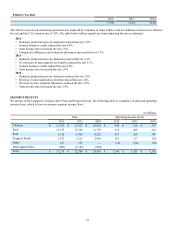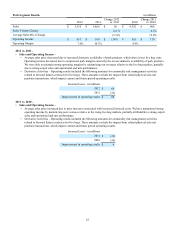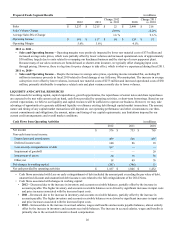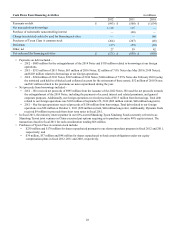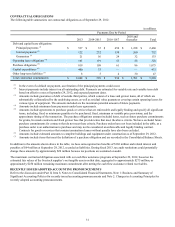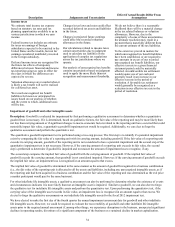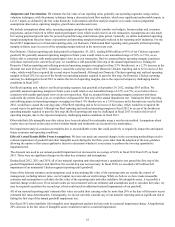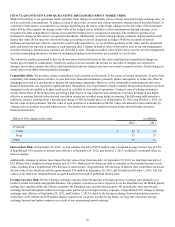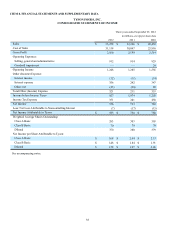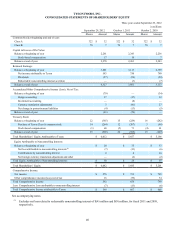Tyson Foods 2012 Annual Report Download - page 32
Download and view the complete annual report
Please find page 32 of the 2012 Tyson Foods annual report below. You can navigate through the pages in the report by either clicking on the pages listed below, or by using the keyword search tool below to find specific information within the annual report.
32
CRITICAL ACCOUNTING ESTIMATES
The preparation of consolidated financial statements requires us to make estimates and assumptions. These estimates and assumptions
affect the reported amounts of assets and liabilities and disclosure of contingent assets and liabilities at the date of the consolidated
financial statements and the reported amounts of revenues and expenses during the reporting period. Actual results could differ from
those estimates. The following is a summary of certain accounting estimates we consider critical.
Description Judgments and Uncertainties Effect if Actual Results Differ From
Assumptions
Contingent liabilities
We are subject to lawsuits, investigations
and other claims related to wage and hour/
labor, environmental, product, taxing
authorities and other matters, and are
required to assess the likelihood of any
adverse judgments or outcomes to these
matters, as well as potential ranges of
probable losses.
A determination of the amount of reserves
and disclosures required, if any, for these
contingencies are made after considerable
analysis of each individual issue. We
accrue for contingent liabilities when an
assessment of the risk of loss is probable
and can be reasonably estimated. We
disclose contingent liabilities when the
risk of loss is reasonably possible or
probable.
Our contingent liabilities contain
uncertainties because the eventual
outcome will result from future events,
and determination of current reserves
requires estimates and judgments related
to future changes in facts and
circumstances, differing interpretations of
the law and assessments of the amount of
damages, and the effectiveness of
strategies or other factors beyond our
control.
We have not made any material changes
in the accounting methodology used to
establish our contingent liabilities during
the past three fiscal years.
We do not believe there is a reasonable
likelihood there will be a material change
in the estimates or assumptions used to
calculate our contingent liabilities.
However, if actual results are not
consistent with our estimates or
assumptions, we may be exposed to gains
or losses that could be material.
Marketing and advertising costs
We incur advertising, retailer incentive
and consumer incentive costs to promote
products through marketing programs.
These programs include cooperative
advertising, volume discounts, in-store
display incentives, coupons and other
programs.
Marketing and advertising costs are
charged in the period incurred. We accrue
costs based on the estimated performance,
historical utilization and redemption of
each program.
Cash consideration given to customers is
considered a reduction in the price of our
products, thus recorded as a reduction to
sales. The remainder of marketing and
advertising costs is recorded as a selling,
general and administrative expense.
Recognition of the costs related to these
programs contains uncertainties due to
judgment required in estimating the
potential performance and redemption of
each program.
These estimates are based on many
factors, including experience of similar
promotional programs.
We have not made any material changes
in the accounting methodology used to
establish our marketing accruals during
the past three fiscal years.
We do not believe there is a reasonable
likelihood there will be a material change
in the estimates or assumptions used to
calculate our marketing accruals.
However, if actual results are not
consistent with our estimates or
assumptions, we may be exposed to gains
or losses that could be material.
A 10% change in our marketing accruals
at September 29, 2012, would impact
pretax earnings by approximately $15
million.


